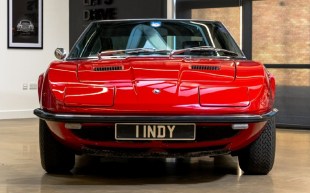Who invented the car?
Depends what you mean by car...
WHILE THE Mesopotamians are credited with inventing the wheel and the first evidence of wheeled vehicles emerges around 4,000 BC, it took more than five and a half millennia before somebody managed to make a vehicle move without having to rely on either gravity or animal power.
Like trying to determine the fastest car in the world, definitively proclaiming the true inventor of the car is difficult, as it depends on one’s definition of car. Does one include steam carriages or is it just the first petrol-powered models?
Either way, we must regrettably exclude the Belgian Jesuit missionary, Ferdinand Verbiest, from contention. Around 1672, Verbiest is said to have built a steam-powered trolley as a toy for the Chinese emperor. While Verbiest’s toy was the first machine capable of moving under its own power, at just 65cm long, it could carry neither driver nor goods and as such can’t really be considered the first car.
The earliest motorised vehicles
Credit for the first car often goes to Frenchman Nicolas-Joseph Cugnot who, in 1770, built a steam-powered artillery tractor. The fardier à vapeur was an experimental 2.5-ton vehicle designed to carry heavy military equipment. It consisted of two wheels at the rear and the boiler mounted at the front ahead of the single, steered front wheel.
Its top speed was said in theory to be 2.25mph, but the engine was so inefficient and unreliable that it never achieved that. The design was deemed interesting enough at the time to be preserved, and it survives to this day in a Paris museum.
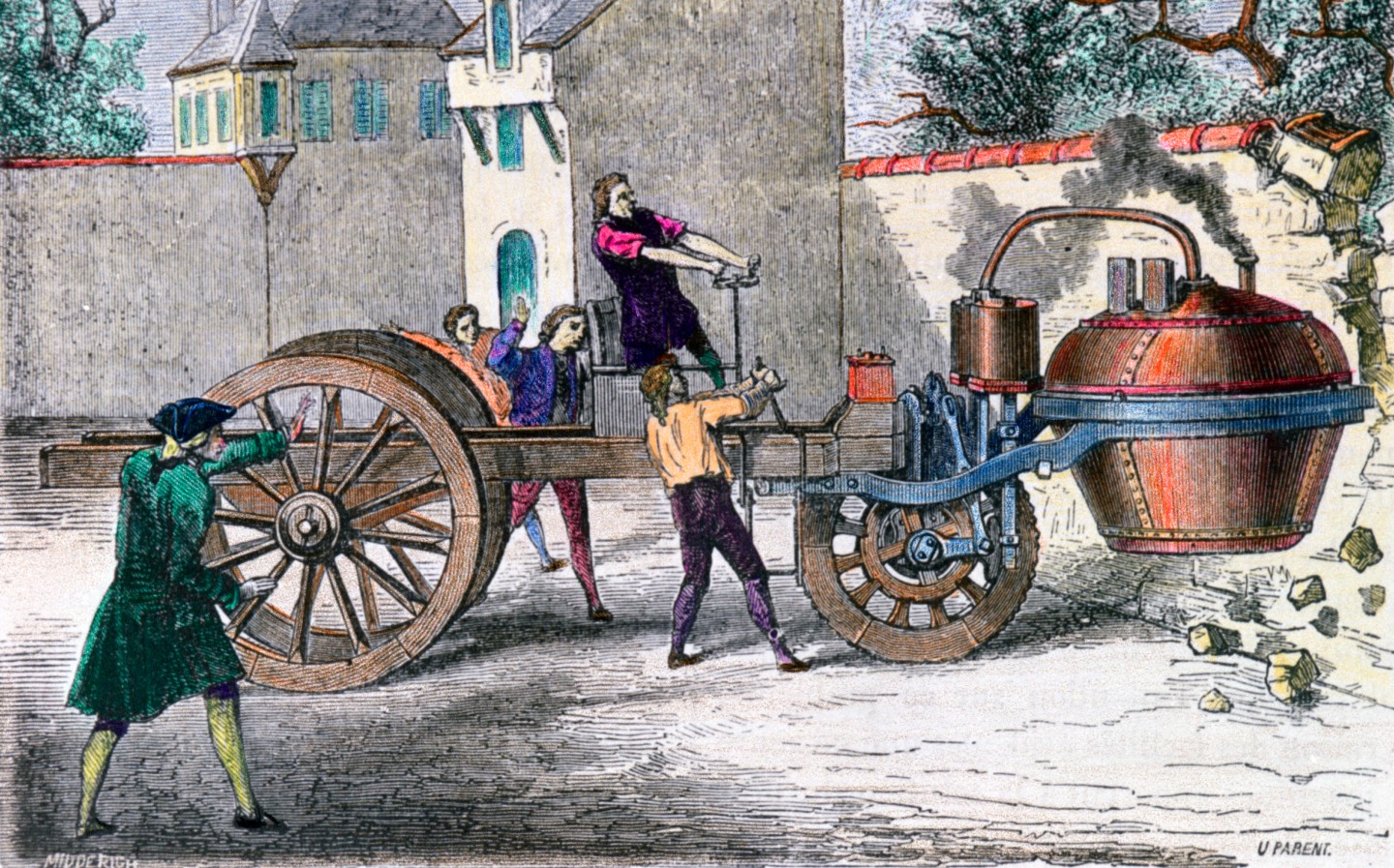
Reports from around 30 years after Cugnot’s steam tractor trials suggest that at one point the inventor crashed one of his vehicles into a wall and was arrested for dangerous driving, which would, if true, make Cugnot the first person involved in a motor accident as well as the first motorist to be arrested.
The 19th century saw much experimentation with propulsion methods and further development of steam-powered road vehicles in Britain and elsewhere. Czech/Polish professor Josef Bozek developed an oil-burning steam vehicle in 1816.
The Scottish inventor Robert Anderson created an electric carriage in the 1830s powered by non-rechargeable batteries, giving Anderson a good claim as the inventor of the first electric car.
Who invented the first petrol-powered car?
One of the biggest developments in the history of the car came in 1867 when Nicolaus Otto and Eugen Langen invented the first four-stroke engine powered by petrol.
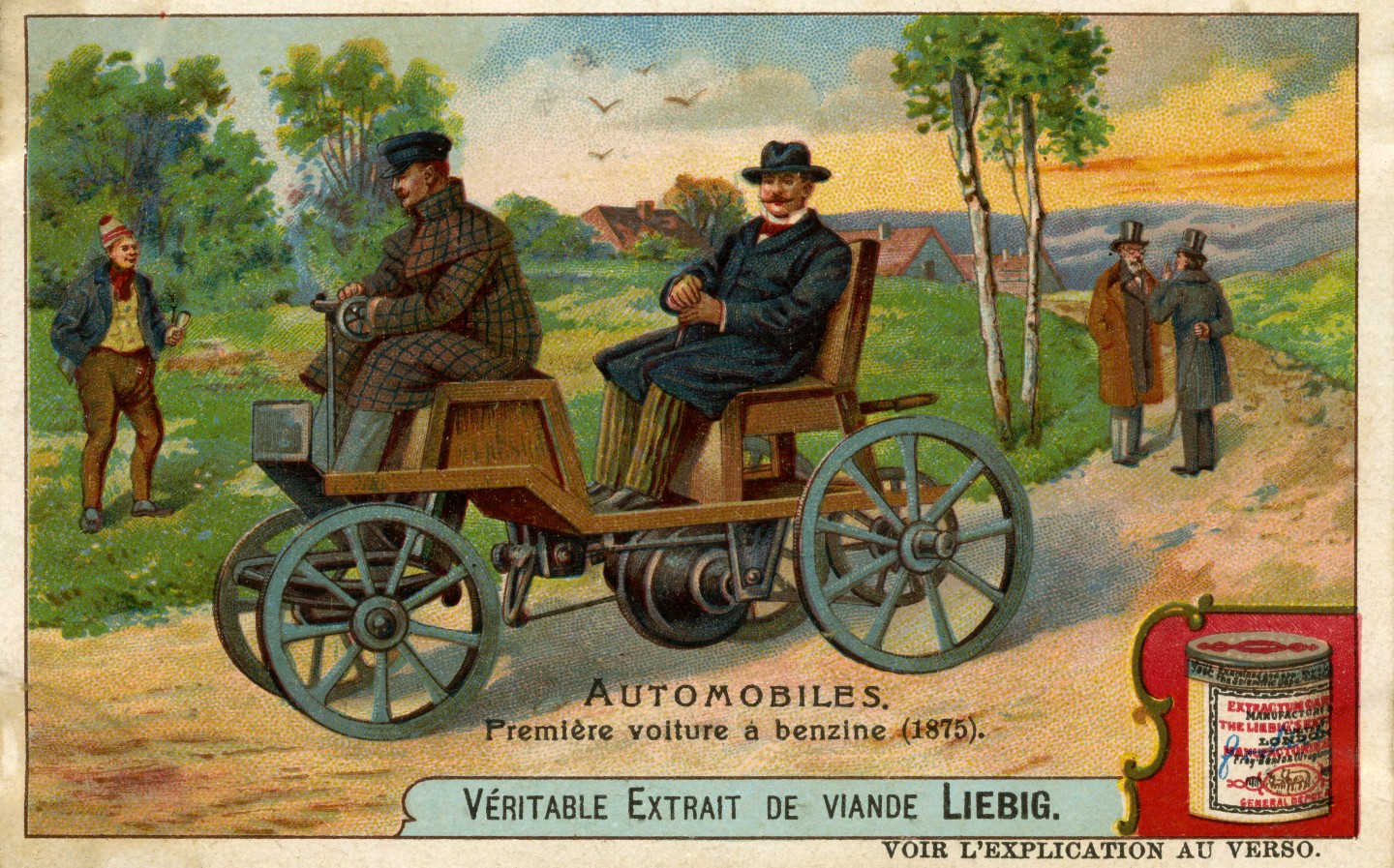
The first engineer to use one of these new “Otto-cycle” engines in a road vehicle was the German Siegfried Marcus in around 1870. While his first model was more of a cart than a car, his second 1875 model (above), which remains preserved in the Technical Museum in Vienna, is far more car-like than even Karl Benz’s later Patent Motor Wagen. As such, Siegfried Marcus can lay claim to being the inventor of the petrol-powered automobile and was hailed as such in his lifetime.
Marcus, however, was Jewish, and when the Nazis came to power they ordered him expunged from the history books, the credit for inventing the modern automobile going to Karl Benz instead.
What did Karl Benz do?
Karl Benz designed and built an early petrol-powered car, the Benz Patent Motorwagen in 1885 and was granted a patent for it in 1886. The three-wheeler, using an engine of Benz’s own design, began series production in 1888, giving him the accolade at least of being the first person to begin commercially producing cars; Siegfried Marcus’s vehicles were purely experimental.
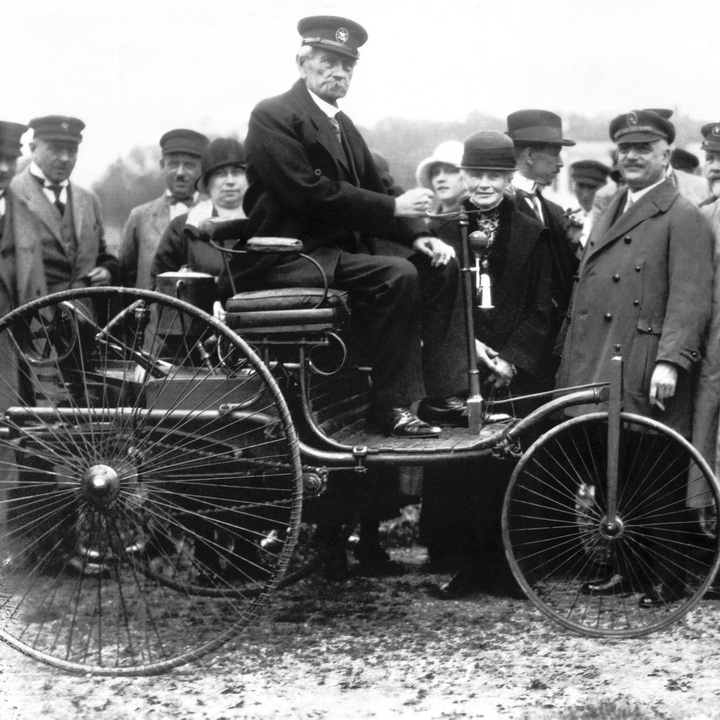
What was the first mass-produced car?
The first car to be mass-produced on an assembly line was the 1901 Oldsmobile Curved Dash, a pioneering American car built until 1907 with around 19,000 units made. The image of it below was taken in 1902.
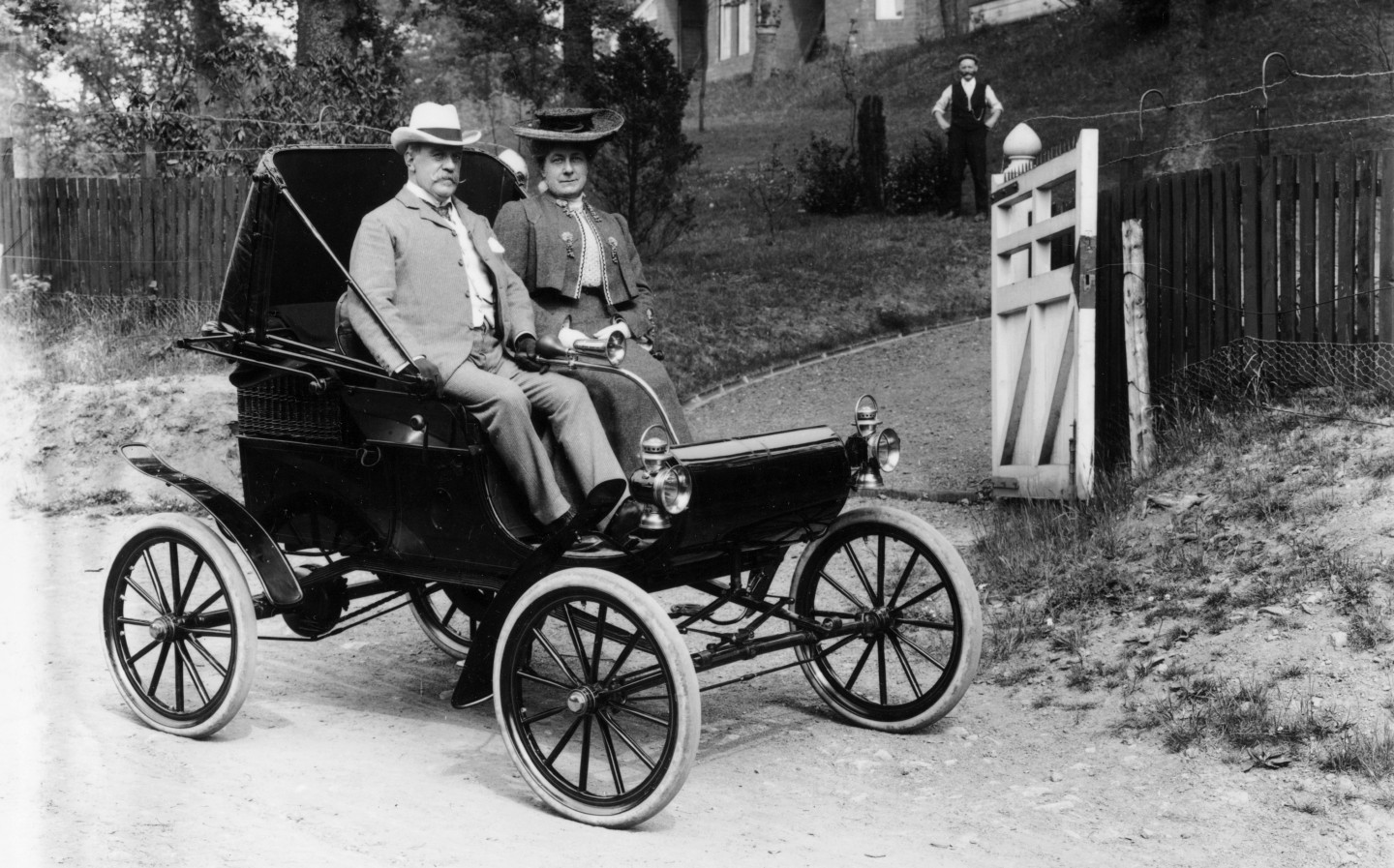
It was Henry Ford’s adoption of the moving assembly line in 1913, inspired by the techniques used in Chicago slaughterhouses, that had the most profound influence on car production.
The moving assembly line meant that a single Ford Model T took just 93 minutes to produce, meaning that the company could build the car in vast numbers and thus take advantage of economies of scale. It allowed the Model T to be sold more cheaply, making it the most popular car in the world with fifteen million sold between 1908 and 1927.
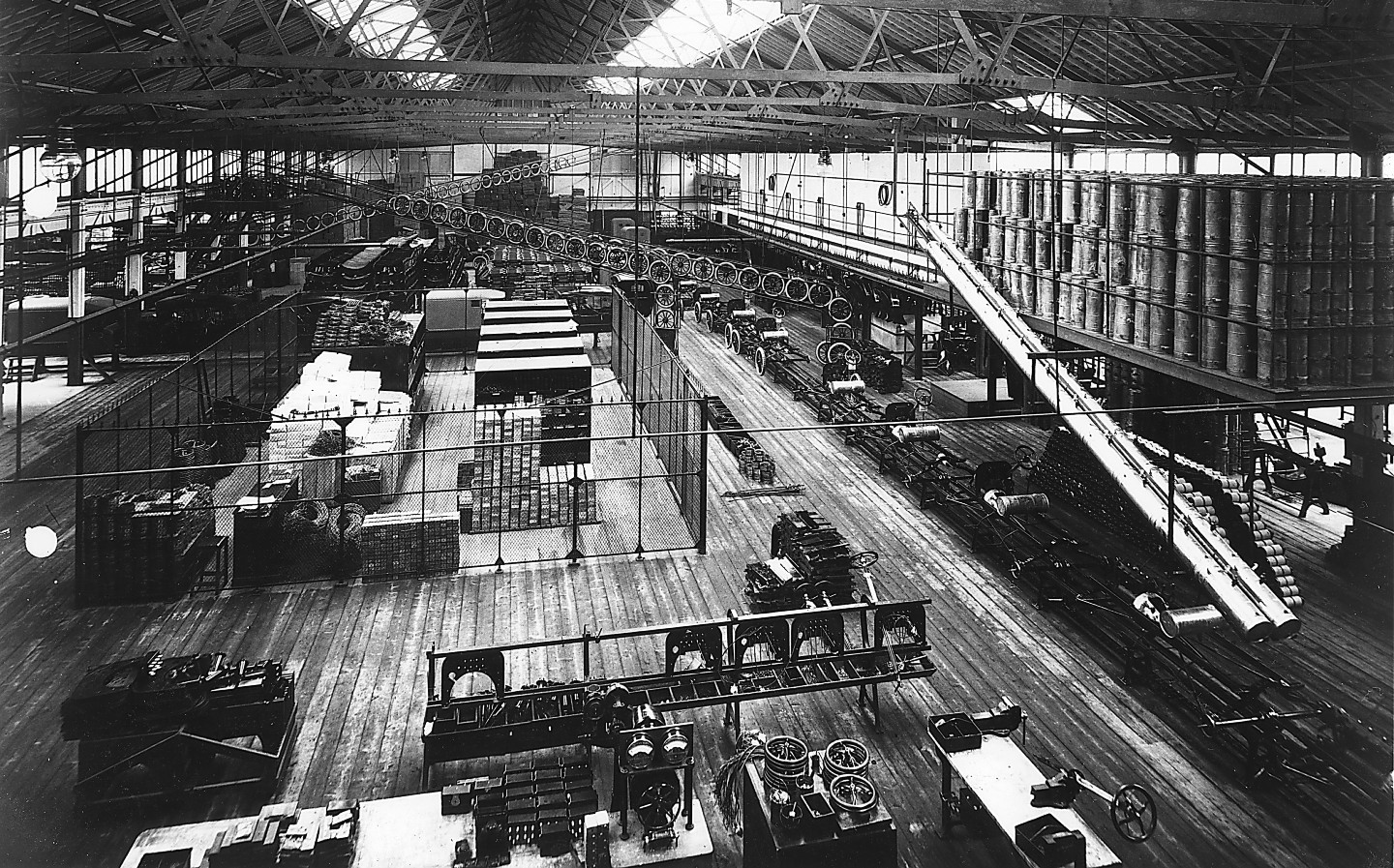
Other manufacturers soon adopted Ford’s mass-production techniques and though now robotised, the basic principle of car manufacturing remains the same today.
Why did petrol cars become more popular than electric and steam?
Electric cars were more popular than petrol and steam at the turn of the 20th century, but it wasn’t long before petrol became the dominant fuel for road vehicles.
One of the advantages of electric cars was that they were easy to start and operate, whereas petrol models required a hand crank and careful finessing while in use. Cranking could be dangerous, and breaking an arm as the crank lever spun round wasn’t unheard of. What’s more, petrol stations were not common — the fuel was bought in bottles from chemists in the early days before hand pumps were installed outside shops.
Steam cars, meanwhile, required a boiler to be heated to operating pressure, which could take half an hour or so.
The problem with electric cars, though, was the battery chemistry. Whereas modern lithium-ion batteries can be recharged relatively quickly, generate a lot of power and last for years, in the early days the type used were slow to charge, didn’t allow for long-distance travel and faded more quickly. Electricity was also not yet widespread around 1900.
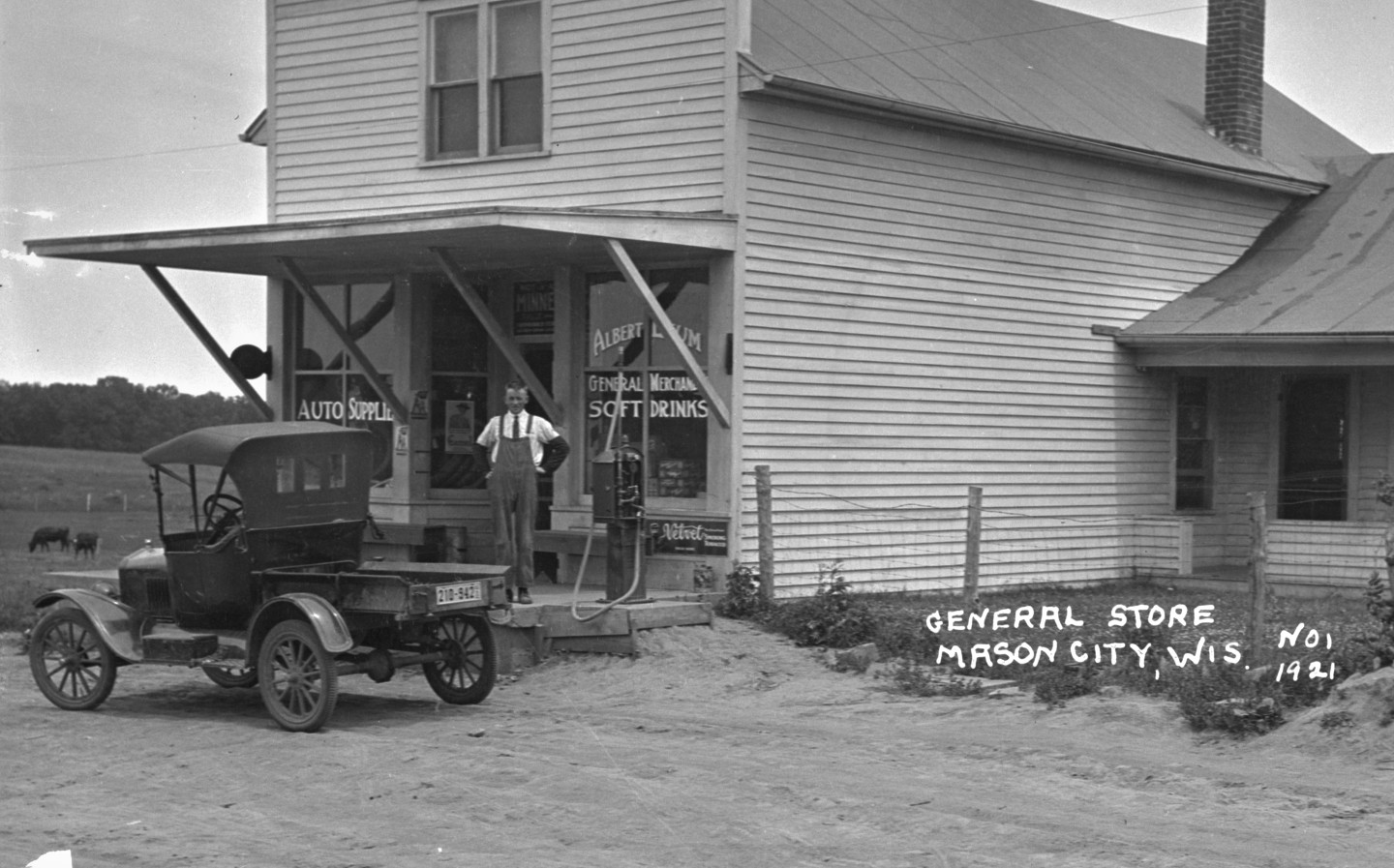
The success of the Ford Model T in driving down costs and the expansion of the filling station network to allow long-distance travel gave petrol power the edge. The electric starter motor was invented in 1903 and, though it wasn’t available on the Model T until 1919, made petrol cars much easier (and safer) to start, which sealed petrol’s success.
What was the first diesel car?
Rudolf Diesel built the first diesel engine in 1893, and while it was initially applied to locomotives, lorries and tractors, the first series-production diesel car was the 1933 Citroen 7U Familiale estate. Manufacturers Mercedes and Hanomag followed soon after.
The fuel surged in popularity in the 1990s and 2000s, as governments scrambled to tackle the greenhouse effect cause by the creation of carbon dioxide. Diesel produces far less CO2 than petrol, so the fuel received significant tax breaks. However, it became evident that other harmful emissions from diesel, namely oxides of nitrogen and particulate matter, were having an effect on human health, and car makers were told to clean up their diesel engines.
This led to the 2015 dieselgate scandal, in which Volkswagen was found to have been using “defeat devices” to recognise emissions tests and switch to a more less polluting engine mode than was used on the road. A catastrophic loss in faith of diesel resulted, and governments turned to resurgent electric vehicle technology to meet their climate goals. Many, including the UK, are now planning to phase out the sale of both petrol- and diesel-powered cars by the 2030s in an effort to hit climate targets. So while petrol and diesel have had their day, electric power is back with a vengeance.
Tweet to @ST_Driving Follow @ST_Driving
- If you liked reading about who invented the car, you might also like to read that a fifth of classic cars fail MOT – despite not needing one
- Did you know that drivers may be hit with £40 penalty for leaving their cars idling to defrost windscreens
- Five of the best winter tyres for 2021 and where to buy them



